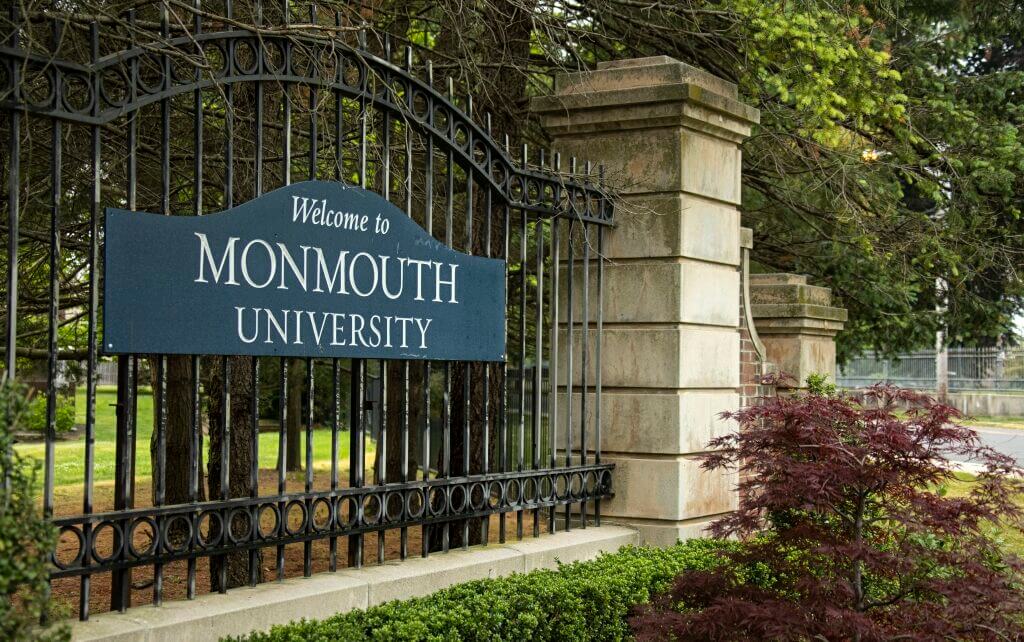Despite the ongoing uncertainties of the COVID-19 pandemic and new concerns over the Delta variant, Monmouth University has started to return to a sense of normalcy this fall.
“If you look at last year compared to this year, course delivery has shifted almost completely to in-person instruction because that was our goal and our focus,” said Mary Ann Nagy, Vice President for Student Life and Leadership Engagement. “We want people to be in a classroom.”
Virtual and hybrid course modalities became overwhelmingly common last year as a result of the pandemic. “Can you do it on a screen? Absolutely,” said Nagy. “There is a different feel, but you can successfully do it that way.”
Along with continued cleaning protocols and social distancing regulations, increased vaccination rates among students and faculty have solidified confidence in the safety of returning to campus and shifting classes back to a classroom setting. 94 percent of faculty and staff are vaccinated, as well as 85 percent of students.
“We’re very pleased with the vaccination rates among our students and faculty. We would always like to see more people vaccinated, but I understand and respect individual decisions not to be vaccinated,” explained Nagy. “I hope that over a period of time that that may change, and I think that we’re already seeing some of that. Students who at one point may have wanted an exemption are now uploading vaccination cards.”
As a part of the process of returning to campus, the University required students to provide proof of vaccination or a valid exemption. “We did a really good job of following up with people we hadn’t heard from to get them to tell us their vaccination status. We weren’t saying you had to be vaccinated, you just had to tell us,” Nagy said.
For those who have not yet received the vaccine, the University continues to provide opportunities to get it. “We offer our own vaccination clinics here on campus so that we can ease access to a vaccine. Back in January, people were staying up through all hours of the day and night to try to get an appointment to get a vaccine. That has died off tremendously because the availability of vaccines is far greater now,” explained Nagy. “We wanted to make sure that we continue to have vaccines available. We have at least one more clinic where you can get Pfizer, Moderna or Johnson and Johnson.”
Classroom capacities have posed a challenge in returning to in-person classes. Three feet of distance must still be maintained between students in a classroom, which has required some creativity to accommodate. “We’ve taken places that normally aren’t classrooms and transformed them into classrooms. Anacon Hall now has two classrooms, one in A and one in B, so that we can have bigger spaces to put people in to spread them out,” said Nagy.
“We also secured the use of temporary classrooms that can hold 25 people with three feet of distance between them so that we had extra classrooms to be able to be used for larger classes,” explained Nagy. “To the best of my knowledge, there’s no specific classes that are being taught in the temporary classrooms. You obviously can’t do technical kinds of classes like labs and things like that, but they’re fully furnished. When you’re in there, you don’t really realize that it’s a temporary classroom. They have all of the technology, they’re air conditioned, they have windows. They have everything you need in a classroom, so there’s not a lot of classes that can’t be held there.”
These classrooms, labeled “E TS” on class schedules, created some confusion among students with classes located in these rooms. “I didn’t know that these temporary classrooms existed until I found out that I had two classes there. When I saw ‘E TS’ on my schedule, I didn’t know what it meant but figured it had something to do with Edison. That’s where I first looked when I was trying to locate these classes,” said junior health studies student, Ashley Haytas.
“I feel that the University tries its best to accommodate classes. With 25 students in a class and to ensure adequate distancing, the trailers were necessary,” explained Tiffany Medley, Ph.D., Lecturer of Biology. “My class Introduction to Global Sustainability is in a popular time frame of Monday and Wednesday from 11:40 to 1:00 and all other large classrooms with sufficient distancing between desks are full.”
Despite many COVID-19 restrictions being lifted this semester, some things have remained the same for the safety of students and faculty. “We’re continuing to spread people out. We’re promoting events outside as much as possible and are still using Zoom to avoid having to bring larger groups together. We’re still doing the enhanced cleaning protocols. We still have wipes and hand sanitizer and all of those things out for use,” explained Nagy.
“I think our greatest challenge right now is getting people to wear their mask. I can’t tell you how many times a day I have to ask someone to put a mask on or to wear it properly,” Nagy continued. It was wonderful to not have to wear masks for a period of time. We all got spoiled, but we’re back in it now.”

